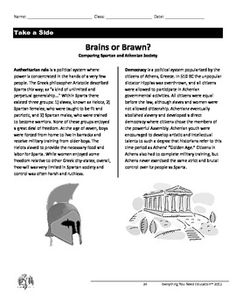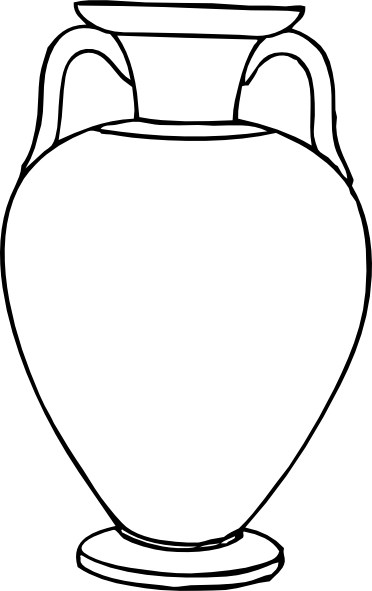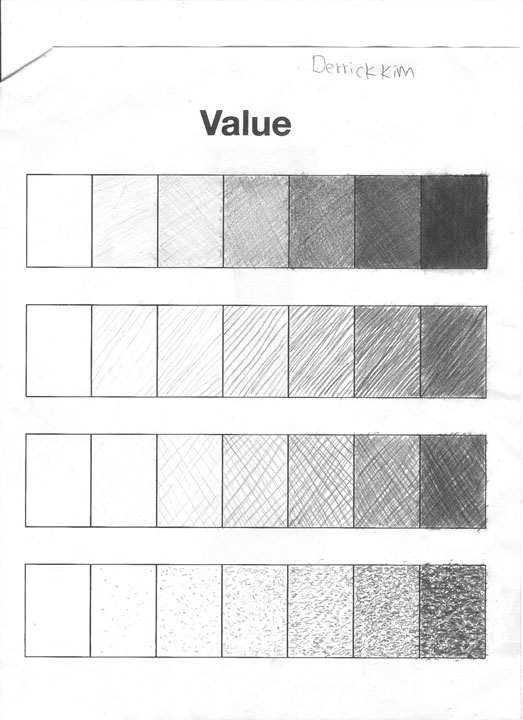Greek Pottery Worksheet
Greek pottery is a fascinating subject that appeals to both history enthusiasts and art lovers alike. This worksheet is designed to provide an engaging way for students to learn about the different types of Greek pottery, their artistic styles, and the cultural significance behind them.
Table of Images 👆
More Other Worksheets
Kindergarten Worksheet My RoomSpanish Verb Worksheets
Cooking Vocabulary Worksheet
DNA Code Worksheet
Meiosis Worksheet Answer Key
Art Handouts and Worksheets
7 Elements of Art Worksheets
All Amendment Worksheet
Symmetry Art Worksheets
Daily Meal Planning Worksheet
What are the main purposes of Greek pottery?
Greek pottery served both practical and symbolic purposes. It was primarily used for storing, transporting, and serving liquids and food. Additionally, Greek pottery often featured elaborate decorations that depicted stories, myths, and scenes from daily life, serving a symbolic and aesthetic purpose by conveying cultural and religious beliefs, as well as showcasing artistic skill and craftsmanship.
What are the common shapes and forms of Greek pottery?
Common shapes and forms of Greek pottery include the amphora (used for storing liquids), krater (used for mixing wine and water), kylix (a stemmed drinking cup), lekythos (used to hold oil), and oinochoe (a jug for pouring wine). These vessels were often decorated with intricate designs, scenes from mythology, and geometric patterns, showcasing the artistry and craftsmanship of ancient Greek potters.
How were Greek pottery techniques influenced by other civilizations?
Greek pottery techniques were influenced by other civilizations through trade and cultural exchange. For example, the Geometric period in Greece saw influences from the Near East, leading to Greek potters adopting new shapes and decorative motifs. Additionally, techniques such as slip-painting and the use of the potter's wheel were likely introduced to the Greeks through contact with Egyptian and Mesopotamian cultures. These exchanges of ideas and technologies helped shape the evolution of Greek pottery styles and techniques over time.
What are the main types of Greek pottery decoration styles?
The main types of Greek pottery decoration styles include black-figure, red-figure, white-ground, and geometric. Black-figure pottery features black figures on a red background, while red-figure pottery reverses this with red figures on a black background. White-ground pottery utilizes white slip as a background for painted figures, typically used for funerary purposes. Geometric style is characterized by abstract geometric and linear patterns, often seen on early Greek pottery. These styles each have distinct characteristics and flourished during different periods of ancient Greek history.
What is the significance of the red-figure and black-figure techniques in Greek pottery?
The red-figure and black-figure techniques in Greek pottery were significant because they represented a major shift in artistic expression and technical innovation during the 6th and 5th centuries BC. The black-figure technique involved painting figures in black silhouette against a red background, while the red-figure technique reversed this, allowing for more intricate details and naturalistic representation. This shift in styles allowed for greater realism, perspective, and storytelling capability in Greek pottery, influencing the development of Greek art and serving as a crucial milestone in the history of ancient Greek ceramics.
How did Greek pottery evolve over time, from the Geometric period to the Hellenistic period?
Greek pottery evolved significantly from the Geometric period (900-700 BCE) to the Hellenistic period (323-31 BCE). In the Geometric period, pottery was characterized by simple shapes and motifs, such as geometric patterns and stylized animals. This evolved into the Archaic period (700-480 BCE) where pottery became more ornate with black-figure and red-figure decorations. Transitioning into the Classical period (480-323 BCE), pottery became more refined and depicted scenes from mythology and daily life in red-figure technique. Finally, in the Hellenistic period, pottery production decreased, and emphasis was placed on large-scale sculpture and architecture, leading to the decline of painted pottery as a prominent art form.
What role did Greek pottery play in religious rituals and ceremonies?
Greek pottery played a crucial role in religious rituals and ceremonies as it was used to store offerings like food, liquids, and incense. These vessels were often decorated with scenes of mythological stories or images of gods and goddesses, enhancing the spiritual significance of the rituals. The elaborate designs and inscriptions on the pottery also served as a way to honor and communicate with the deities, making them an integral part of Greek religious practices.
What were some of the key trade routes and markets for Greek pottery?
Some of the key trade routes and markets for Greek pottery included the western Mediterranean region, where Greek pottery was traded extensively with Etruscan and Italic people in Italy, as well as with the indigenous populations of southern France and Spain. Greek pottery was also highly sought after in the eastern Mediterranean, with major markets in cities such as Athens, Corinth, and Rhodes, where merchants traded extensively with other Greek city-states, Persian Empire, and the Black Sea region. Additionally, Greek pottery was exported to distant markets in North Africa, the Near East, and even as far as regions in Central Asia and beyond.
How were Greek pottery workshops organized and managed?
Greek pottery workshops were typically organized as small family-run businesses with the master potter overseeing the production process. The workshop would employ a team of skilled artisans including potters, painters, and decorators, each specializing in different aspects of pottery making. The master potter would be responsible for sourcing materials, designing the pottery, and ensuring quality control. Workshops were often located near sources of clay and water for easy access to raw materials, and apprentices would be trained within the workshop to ensure the continuation of the craft.
What are some of the well-known Greek pottery artists and their contributions?
Some well-known Greek pottery artists include the Berlin Painter, known for his red-figure technique and depiction of mythological scenes; Exekias, famous for his detailed black-figure work and innovative compositions; and the Andokides Painter, credited with inventing the red-figure technique. These artists and many more have left a lasting impact on the study and appreciation of ancient Greek pottery through their innovative styles and contributions to the field.
Have something to share?
Who is Worksheeto?
At Worksheeto, we are committed to delivering an extensive and varied portfolio of superior quality worksheets, designed to address the educational demands of students, educators, and parents.





































Comments